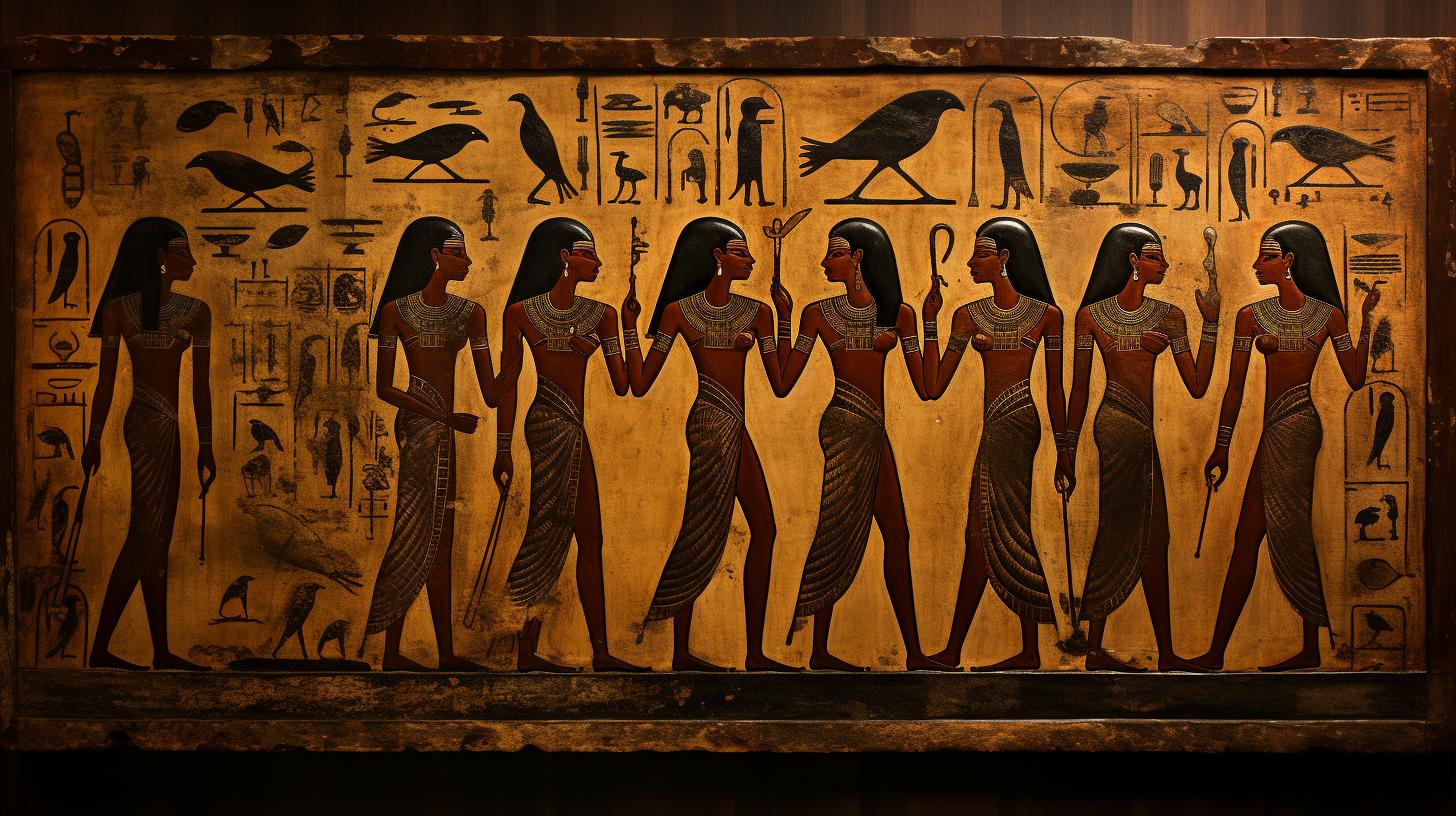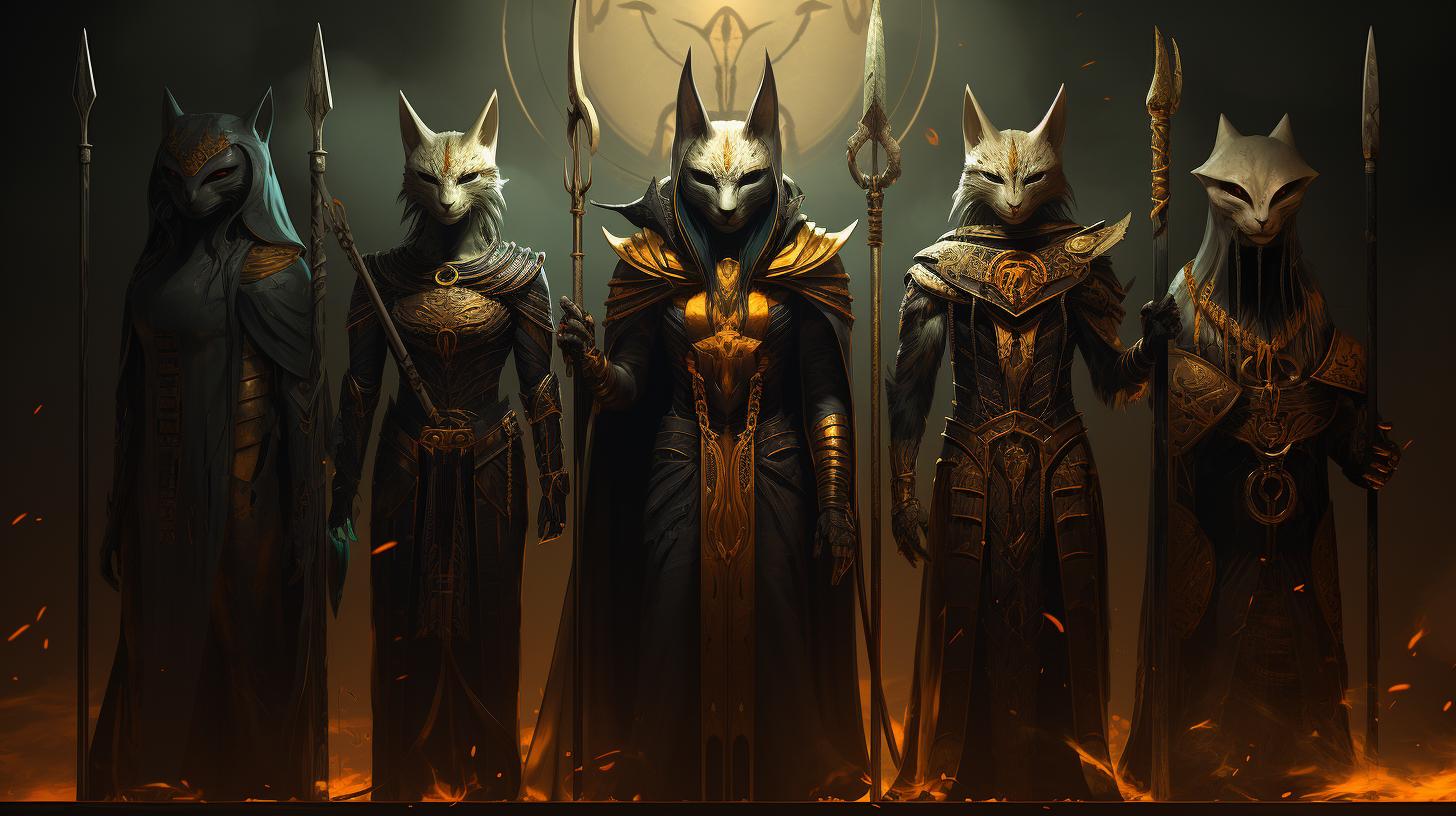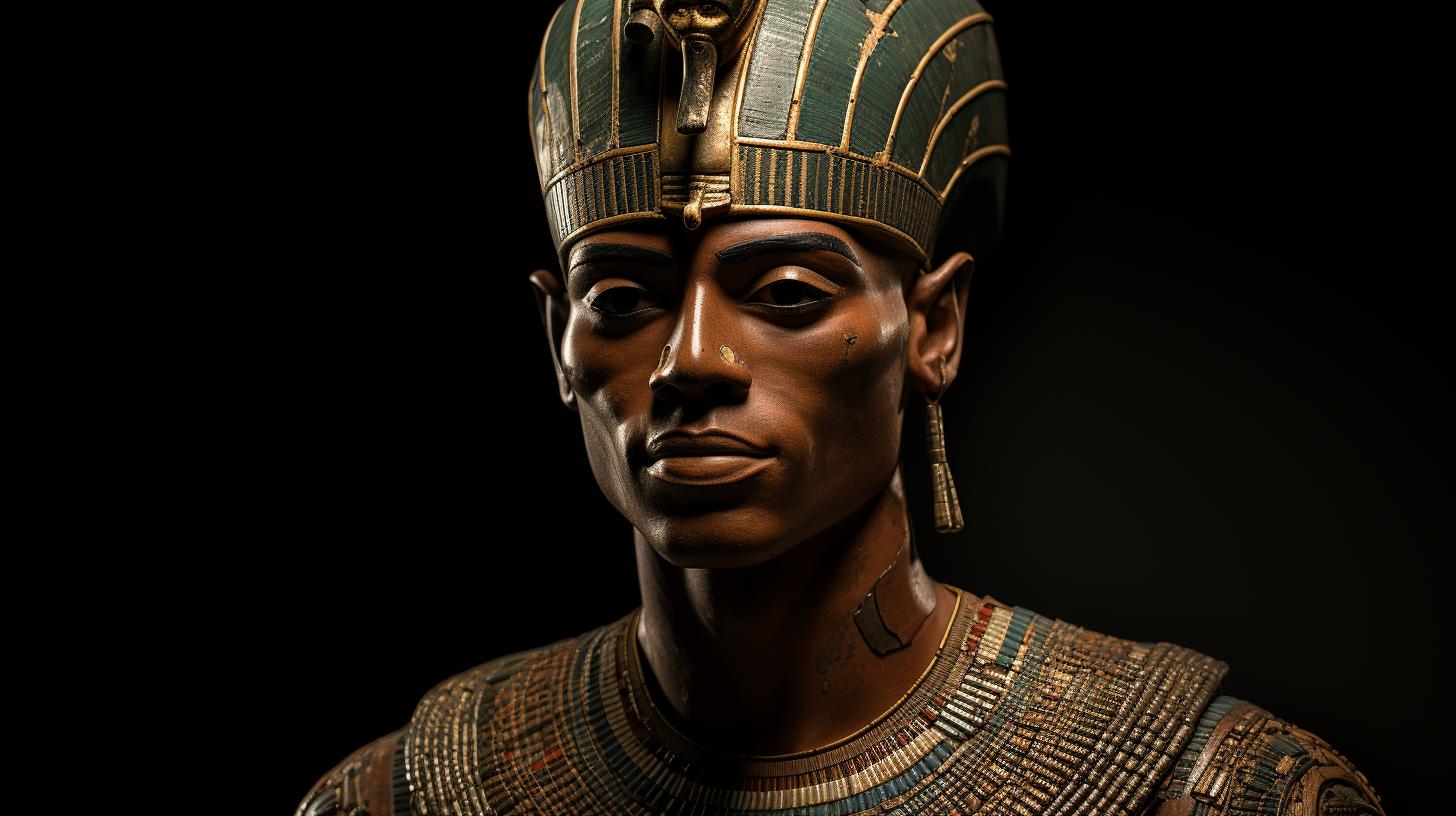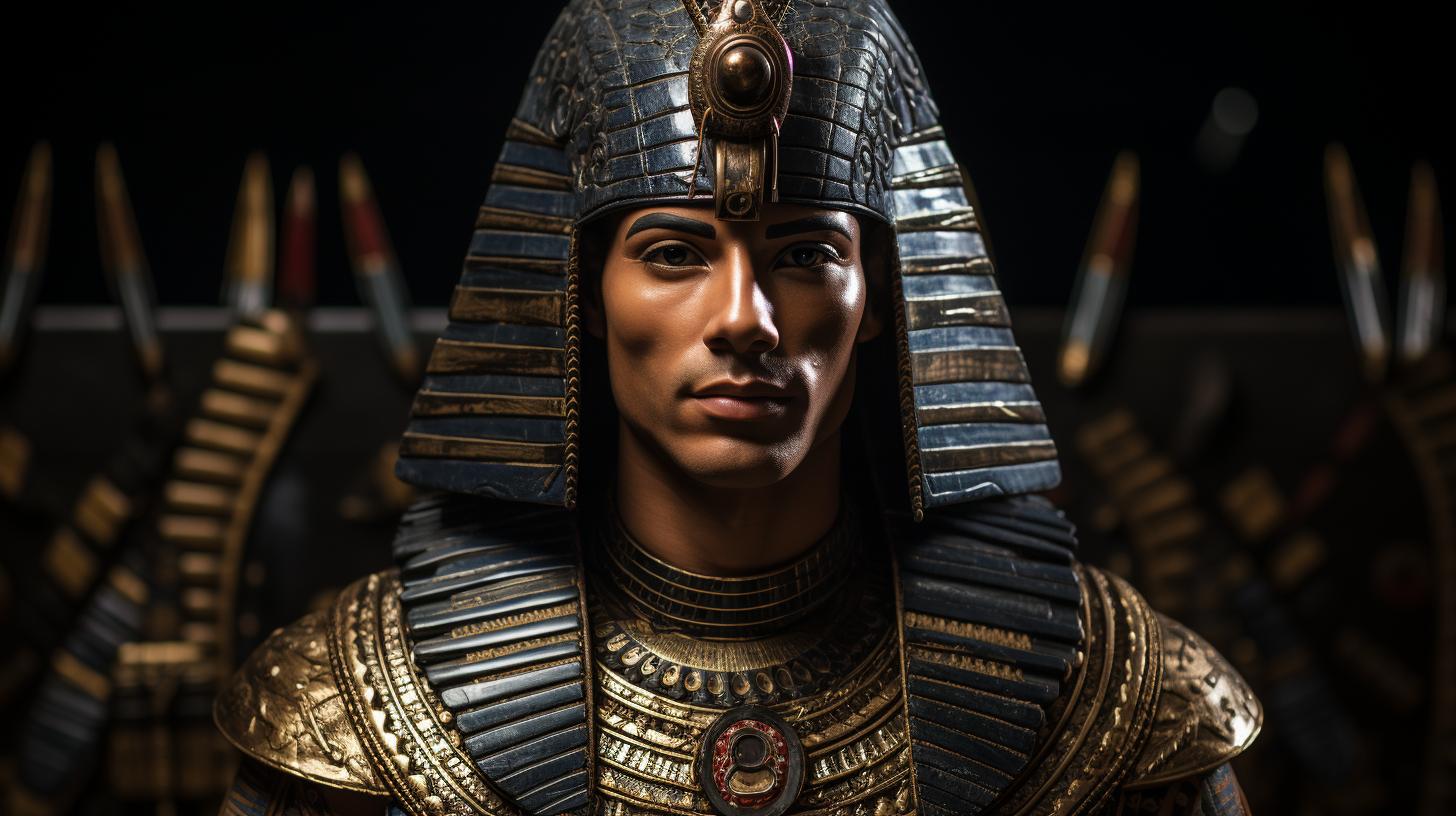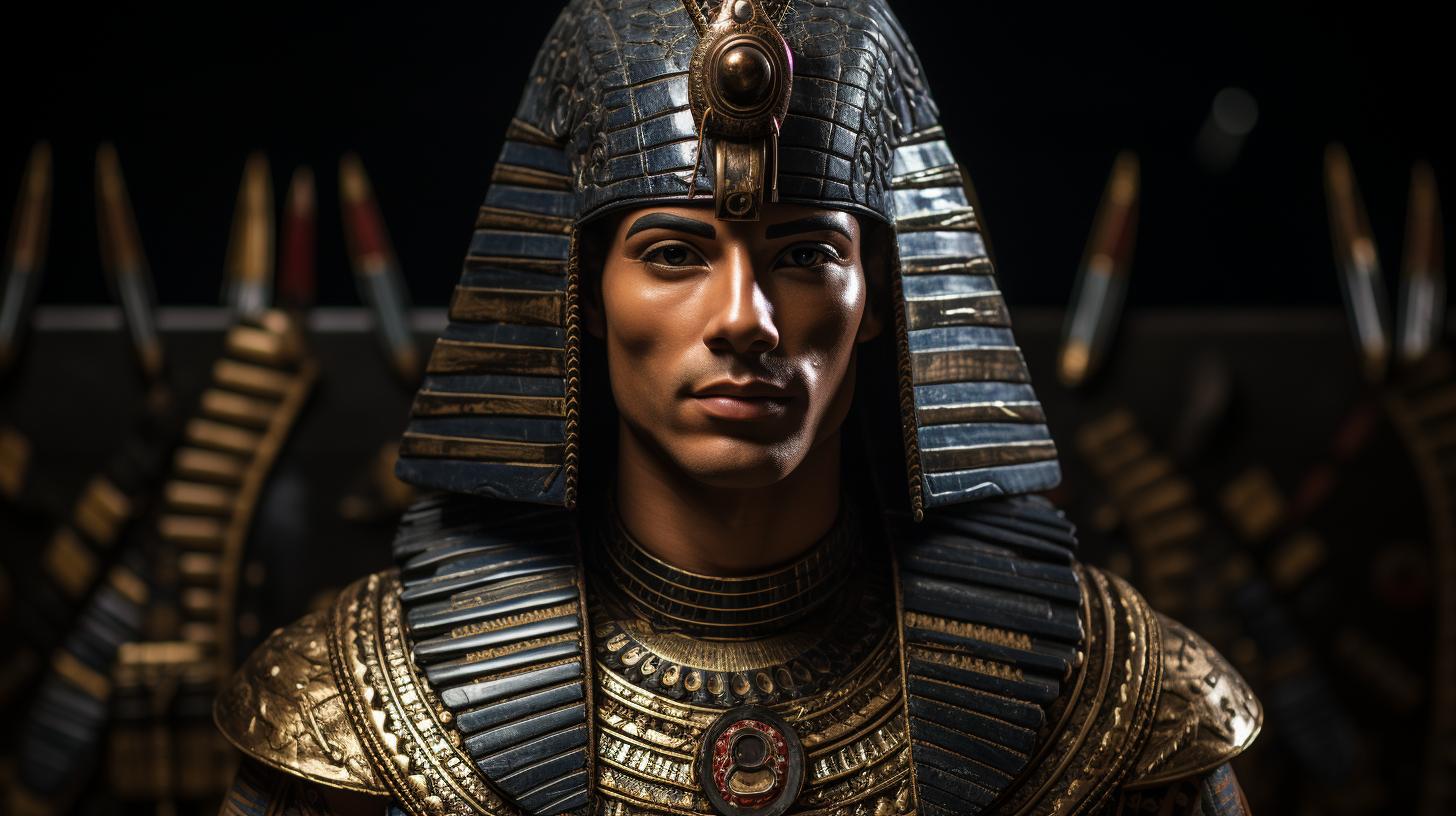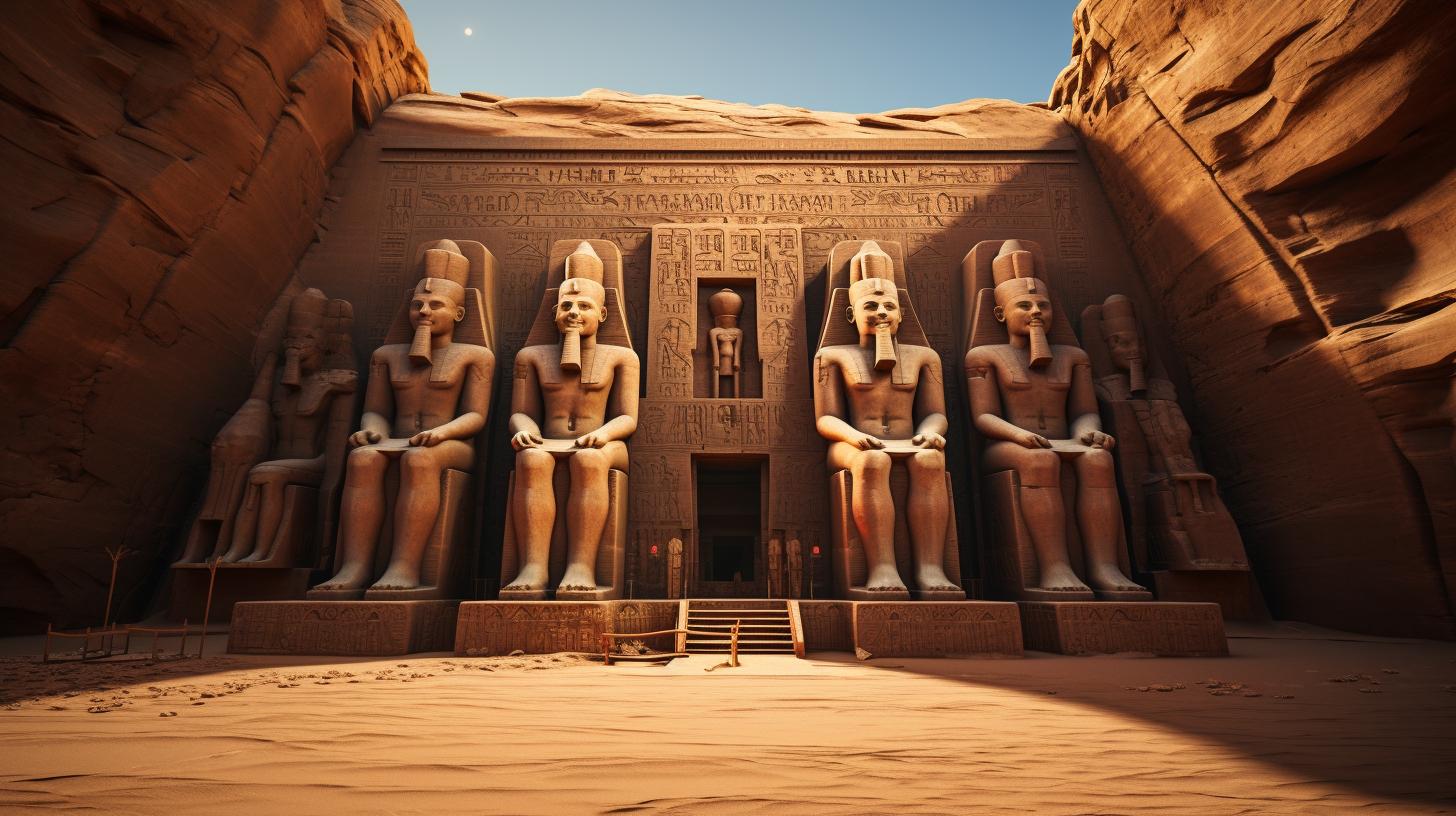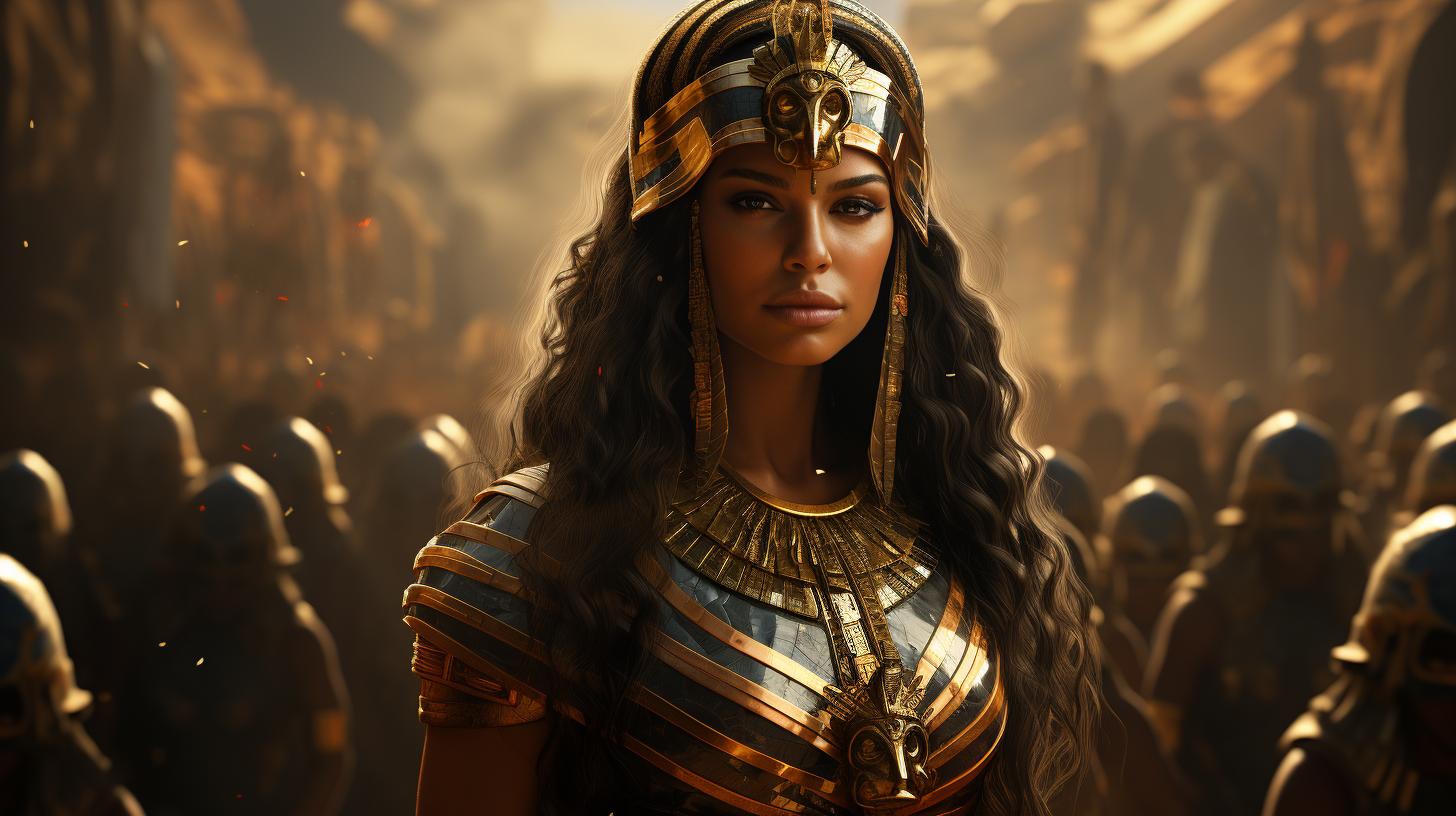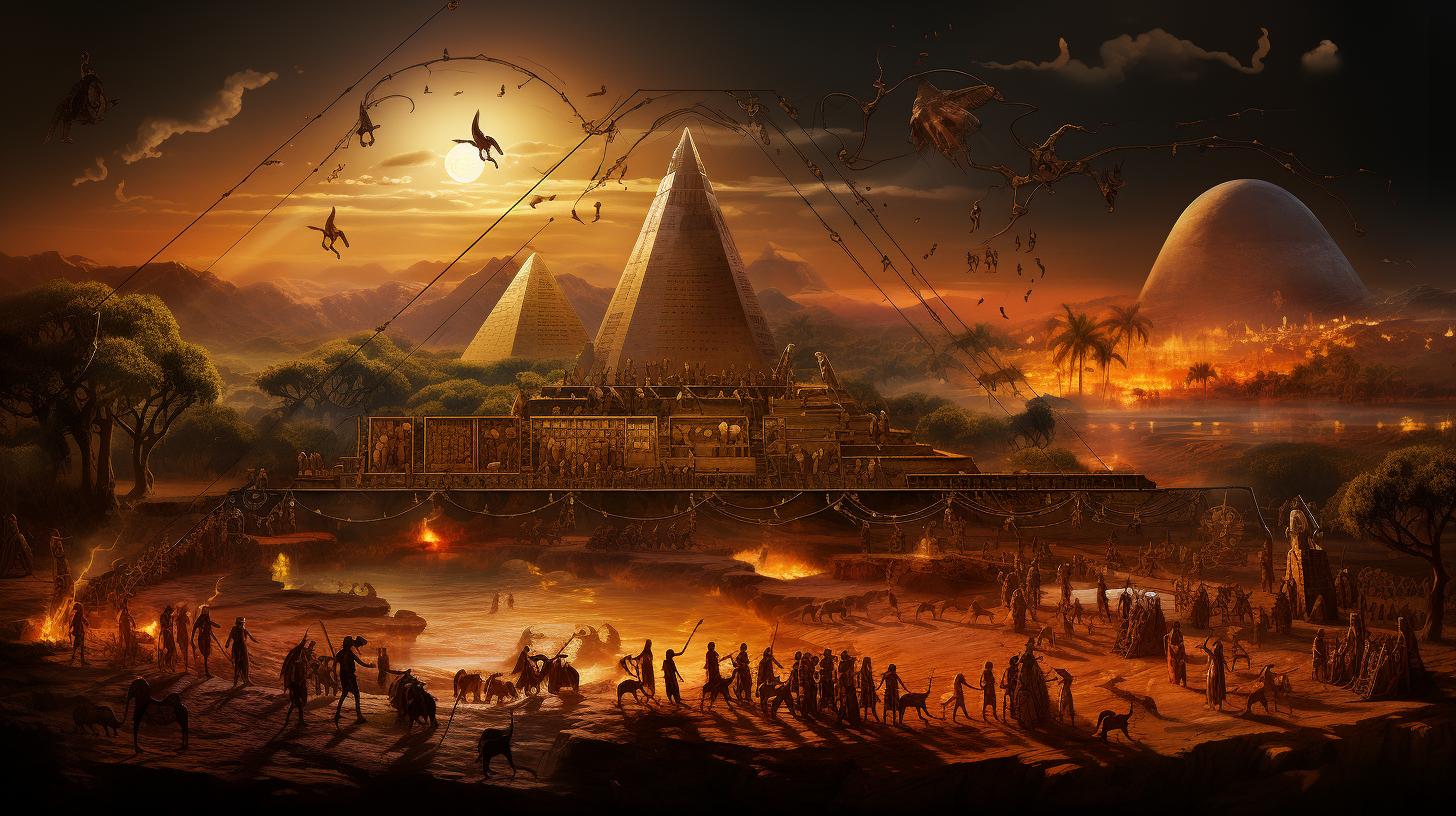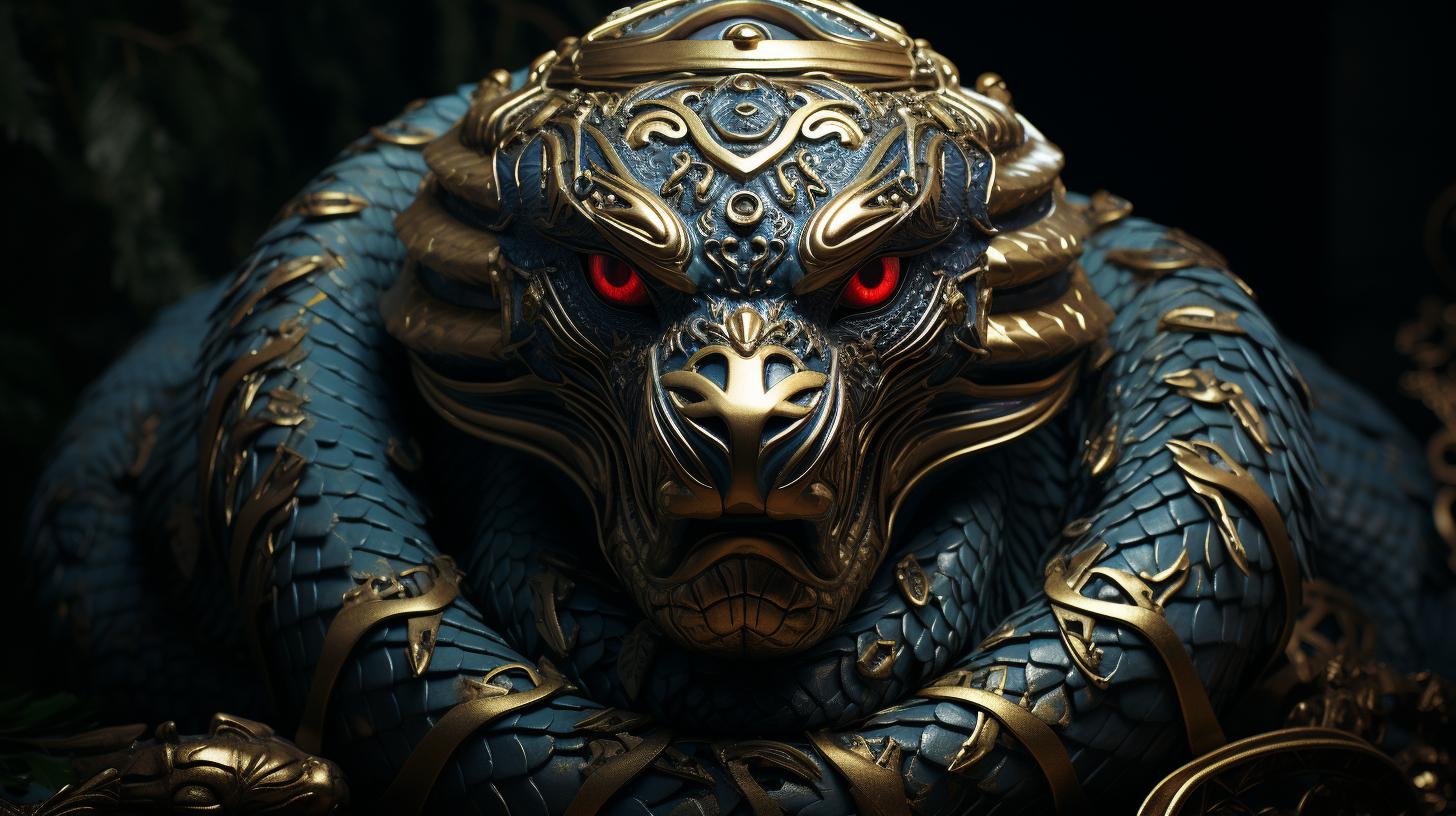Egyptian Mythology Love Stories: Unveiling the Ancient Secrets of Love in Egypt
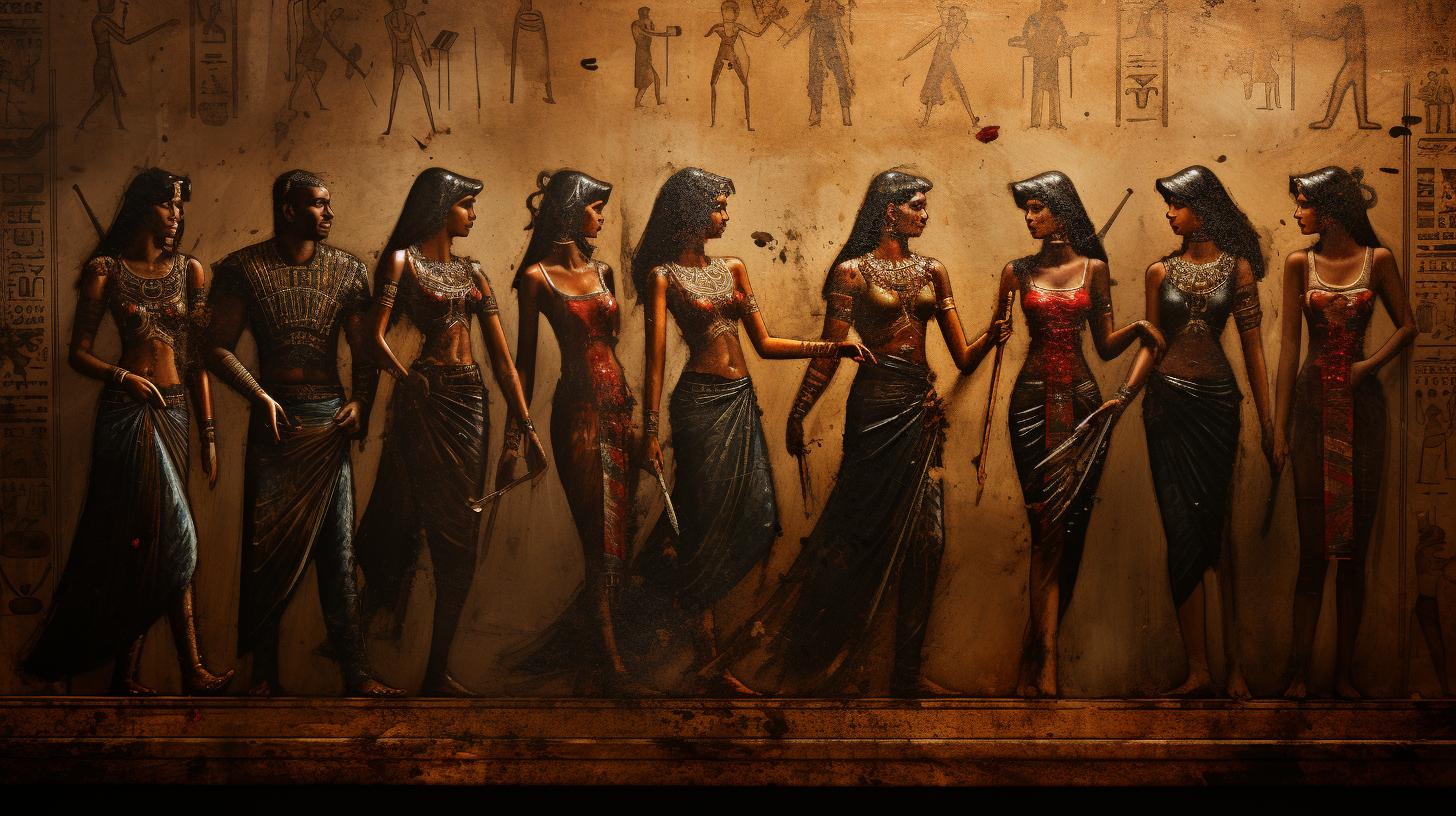
Egyptian mythology Love Stories delve into the powerful tales of love in ancient Egypt. From the enduring love of Isis and Osiris to expressions of affection in everyday life, love played a significant role in Egyptian society.
Explore the captivating myths and legends surrounding love, the rituals and customs of marriage, as well as the rare depictions of love found in ancient Egyptian artifacts. Discover the timeless beauty and enduring power of love in the world of Egyptian mythology.
Love in Ancient Egypt: Exploring the Power of Egyptian Mythology
In ancient Egypt, love played a profound role in the lives of its inhabitants, permeating various aspects of their society. From captivating stories of love in Egyptian mythology to the enduring expressions of affection in relationships and marriage, love held great significance.
The Mythology of Isis and Osiris
One of the most well-known love stories in Egyptian mythology is that of Isis and Osiris. Isis, regarded as Egypt’s most powerful goddess, was both the wife and sister of Osiris. Their love faced a grave challenge when Osiris was murdered and his body dismembered by their brother, Set.
Overwhelmed with sorrow, Isis embarked on a journey to find and collect the scattered parts of her beloved husband, ultimately reassembling them and reviving him. Together, Isis and Osiris conceived their son, Horus, who avenged his father’s death.
This captivating tale showcases the depths of Isis’ unconditional love and dedication to Osiris, as well as the belief in love’s ability to triumph over even death itself.
The Unconditional Love and Dedication of Isis
Isis’ unwavering love and unwavering dedication to Osiris symbolize the strength of love in ancient Egypt.
Despite the challenges they faced, her determination to restore Osiris to life stands as a testament to the power of love and the lengths one would go to for their beloved.
The story of Isis and Osiris serves as a timeless reminder of the depth and selflessness often found in profound and enduring love.
Love’s Triumph over Death: The Revival of Osiris
In the mythological tale of Isis and Osiris, love’s triumph over death takes center stage as Isis defies odds to resurrect her beloved husband.
This portrayal emphasizes the belief held by ancient Egyptians in the eternal power of love and its ability to overcome even the most formidable challenges. The story of Osiris’ revival showcases the intertwining of love, devotion, and the enduring hope for reunion in the afterlife.
Love in Everyday Life: Relationships and Marriage in Ancient Egypt
The ancient Egyptian society placed great importance on marriage, considering it a cornerstone of their culture. Marriage was seen as a significant milestone in a person’s life, symbolizing commitment and the formation of a new family unit.
The Importance of Marriage in Ancient Egyptian Society
Marriage held a central role in ancient Egyptian society, as it played a vital role in maintaining social structure, economic stability, and the continuation of family lineages. It was a sacred union that brought together two individuals, their families, and their respective resources.
Arranged Marriages and Love Relationships
While arranged marriages were prevalent in ancient Egypt, it is important to note that love relationships were valued as well. Both forms of marriage were acceptable, with arranged unions serving practical purposes, such as strengthening alliances between families or consolidating wealth.
Love relationships, on the other hand, were based on mutual affection and attraction. These unions were often celebrated, and evidence of their existence can be found in the form of poems, songs, and other artistic expressions of love.
Expressing Love: Poems and Songs of Affection
Love in ancient Egypt was not just a private matter. It was expressed openly through various forms of art, literature, and music. Poems and songs of affection were dedicated to expressing the deep emotions and desires between couples.
These romantic verses and melodies were often recited or performed on special occasions, serving as a means of celebrating love and reinforcing the bond between partners. They were a testament to the human desire to express and cherish the profound emotions associated with love.
Moreover, the presence of these poems and songs in different settings, such as tombs and temples, indicates that love and its expression were highly valued and considered important aspects of Egyptian society.
In ancient Egypt, love was not only a personal experience but a reflection of the interconnectedness between individuals, families, and the community at large. Relationships and marriages were seen as a vital part of everyday life, shaping the social fabric and contributing to the continuity of Egyptian civilization.
Stay tuned for the upcoming sections that delve deeper into the rituals, customs, and symbolism surrounding marriage in ancient Egypt.
The Institution of Marriage in Ancient Egypt
Marriage held great significance in ancient Egyptian society, reflecting the values and customs of the time.
Marriage Rituals and Customs
The matrimonial ceremonies in ancient Egypt were elaborate and ritualistic, symbolizing the union between two individuals. The rituals involved various steps, including the exchange of vows, the presentation of gifts, and the signing of documents.
These rituals not only solidified the legal aspect of the marriage but also served as a celebration uniting two families. The ceremonies were often held in the presence of witnesses and officiated by priests who blessed the union.
Divorce in Ancient Egypt: A Viable Option
Despite the emphasis on lasting commitment, divorce was recognized as a viable option in ancient Egyptian society. If a marriage reached an irreparable state, both parties could engage in a relatively simple divorce process.
It involved the signing of legal documents and the division of assets agreed upon during the marriage. While divorce was considered a practical solution, it was not taken lightly and still carried social implications.
The Significance of Fidelity in Ancient Egyptian Marriage
Fidelity played a crucial role in the institution of marriage in ancient Egypt. It was expected that both partners remain faithful to each other, upholding the trust and commitment established in the union.
Infidelity was considered a breach of this trust and a valid reason for divorce. The prominence placed on fidelity highlights the importance of honor and loyalty within the marital bond.
- The matrimonial ceremonies in ancient Egypt were elaborate and ritualistic
- Marriages were legally binding and involved the exchange of vows
- Divorce in ancient Egypt was relatively simple but carried social implications
- Fidelity was highly valued, and infidelity could lead to divorce
Expressions of Love in Ancient Egyptian Artifacts and Symbolism
Ancient Egyptian artifacts provide fascinating glimpses into the expressions of love within their society.
These artifacts offer valuable insights into the romantic and affectionate aspects of ancient Egyptian relationships.
Love Scenes in Ancient Egyptian Tombs
A unique discovery in ancient Egyptian tombs is the depiction of love scenes, a rarity in their artwork. These intimate and tender portrayals showcase couples engaged in affectionate gestures, such as holding hands, embracing, or sharing a loving gaze.
These detailed scenes suggest that love and physical intimacy played a significant role in the lives of ancient Egyptians.
Statues and Reliefs Depicting Love and Affection
A multitude of statues and reliefs found in temples and tombs shed light on the ancient Egyptians’ reverence for love and affection. One notable example is the statue of Amenhotep and Tet, depicting a loving embrace between a husband and wife, symbolizing their deep bond and devotion.
Other reliefs showcase couples engaged in romantic activities or exchanging heartfelt gestures, emphasizing the importance of love in the Egyptian society.
Rare Representations of Love: Discoveries and Interpretations
Archaeological discoveries occasionally unearth rare representations of love in ancient Egyptian art. These exceptional findings provide valuable insights into the profound emotional connections between individuals. One remarkable example is the statue of Munkawra and his wife, displaying the couple’s loving connection and the harmony within their relationship.
These extraordinary artifacts inspire further research and facilitate a better understanding of the significance of love in ancient Egyptian culture.
.

